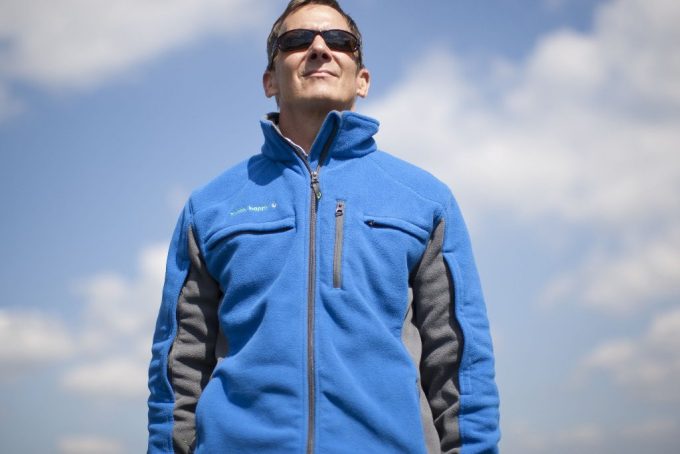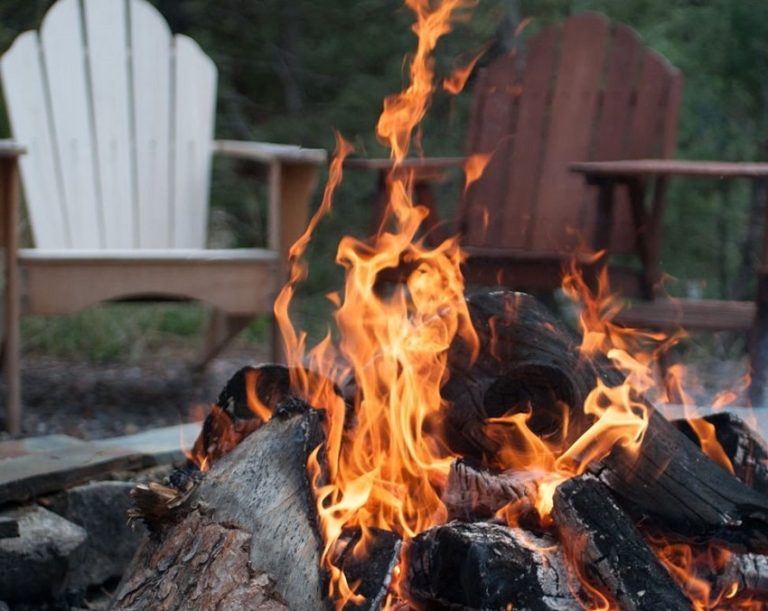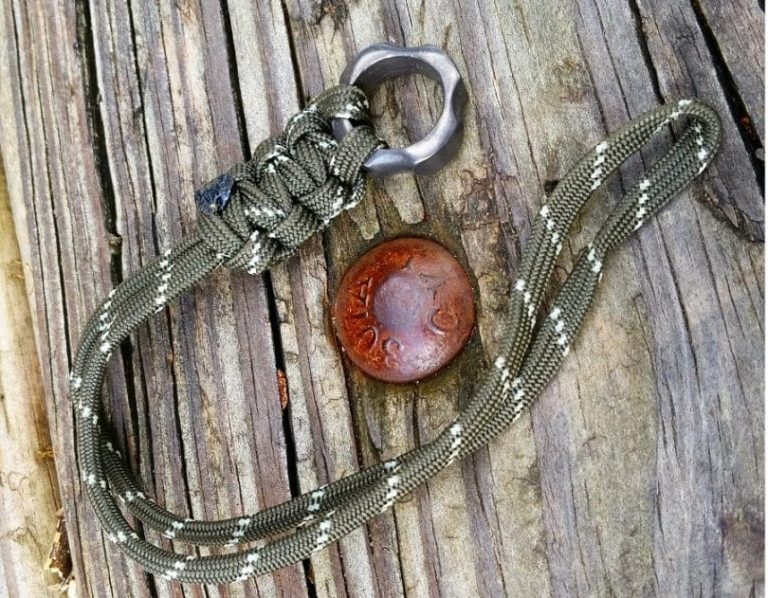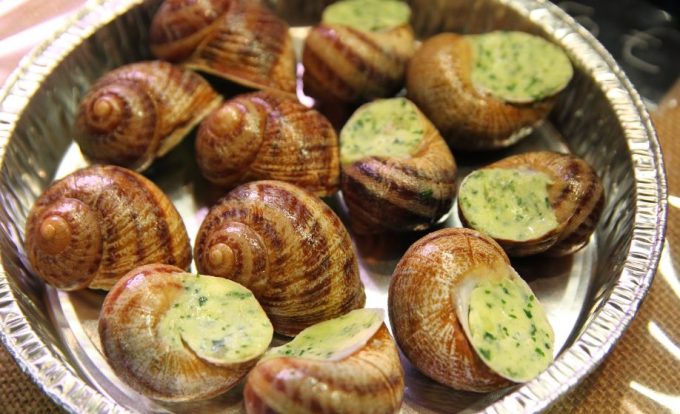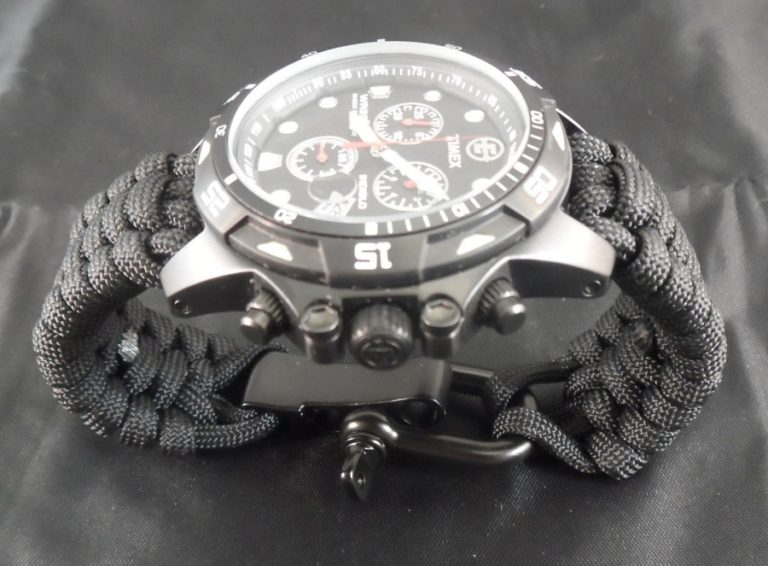Primaloft Vs Down: Maintaining Comfort and Efficiency Through Insulation
When the time comes to decide what will keep you the warmest when braving the outdoors, it can be stressful trying to understand which product will be fool-proof. Whether it be sorting through the endless choices in jackets, sleeping bags, shoes, or gloves, there is a veritable abundance of materials that may be packed.
See also: Best Backpacking Pillow: Keeping Comfortable On the Trail
When faced with products that are similar in appearance and feel, it’s the details that become the most important in the decision-making process. The two materials that will be the make or break factors in choosing outerwear are synthetic insulators versus down insulators.
There are a variety of synthetic options to put up against the down insulation competition, but the cream of the crop is PrimaLoft synthetic insulation, so in this case, the focus is rightfully so Primaloft vs down.
Why trust PrimaLoft above the rest?
There are synthetic insulators that you would want to avoid. Imagine the cheap cotton-like material that spills from stuffed animals after the dog chews them up – you wouldn’t want to get caught depending on that in outdoor survival situations!
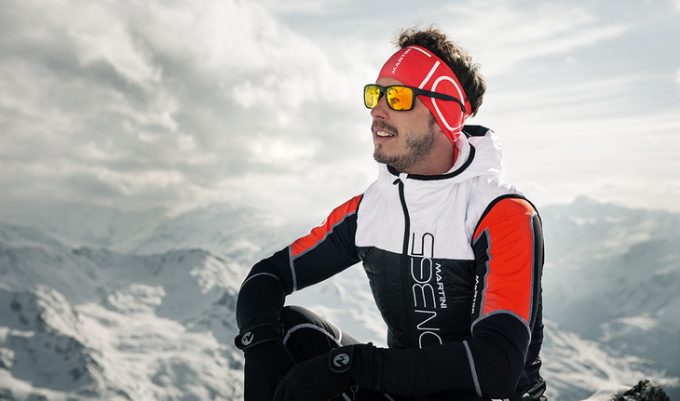
And unfortunately, there are synthetic insulators that could equate to what’s in your dog’s toys. For this reason, the recommended insulation brand to be trusted is PrimaLoft. PrimaLoft is a brand of insulation preferred by all major outdoor gear manufacturers, including brands such as North Face and Patagonia.
PrimaLoft synthetic insulation was initially developed in the 1980s for use by the Army. It features a proprietary microfiber build that focuses on keeping your body warmth within its fibers, in turn allowing for more conservation of energy.
It is able to accomplish this through its premium ultra-fine synthetic fibers, equivalent to qualities of fine silk, at only a fraction the width of a strand of human hair. This is important because the best warmth-retention occurs when fibers maintain loft, meaning they are fluffy and buoyant, allowing for small pockets of space to become trapped. Read our comparative review on synthetic vs. down sleeping bags for more options.
Delicate, fine strands also mean that those air pockets have good tension and density between strands so that heat does not escape the pockets and dissipate. All of these strands also offer lots of warmth with a minimization of weight, known as the insulators “warmth-to-weight ratio”.
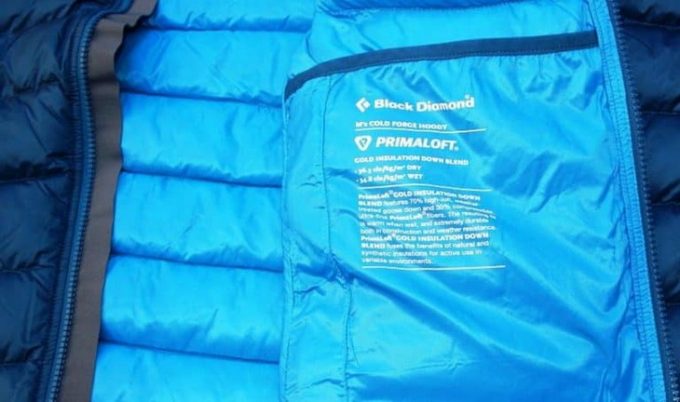
Another key to the reliability and success of PrimaLoft products is the water-resistance PrimaLoft has achieved. PrimaLoft was designed with water-resistance at the heart of it, meaning the surface tension those ultra-fine fibers create will not allow water to seep into your clothing, just as it won’t let heat out.
The synthetic fibers also include a permanent fiber finish that keeps insulation as dry as possible, even when water is trying to force its way in.
Finally, PrimaLoft is the king of comfort. Once again, those fine fibers come into play in that they move and cocoon in a manner that mimics that of fluffy down. They also strike a perfect balance of breathability versus aggressive protection in the way PrimaLoft can permit moisture vapor to be passed through the clothing and off the skin.

Yes, other synthetic insulators may maintain similar qualities, but what pushes it up and over the competition is the obvious effort put into customizing and idealizing the product. PrimaLoft comes in a variety of forms, each offering different benefits, allowing a customization of needs.
Synthetics PrimaLoft insulators
PrimaLoft Gold Insulation
Gold insulation includes high warmth to weight ratio, strong water-resistance, breathability, compressibility for economic storage, and a lightweight and soft feel. This is the most all-encompassing of their synthetic materials.
PrimaLoft Gold Insulation Down Blend
Mimicking the warmth of down as well as retaining all the same qualities of the Gold insulation, it is comprised of 30% PrimaLoft ultra-fine fibers and 70% goose-down.
PrimaLoft Gold Insulation Eco
Characterized as an environmentally conscious choice. Insulation Eco includes 55% recycled materials, as well as maintains a good warmth to weight ratio, strong water-resistance, breathability, and compressibility.
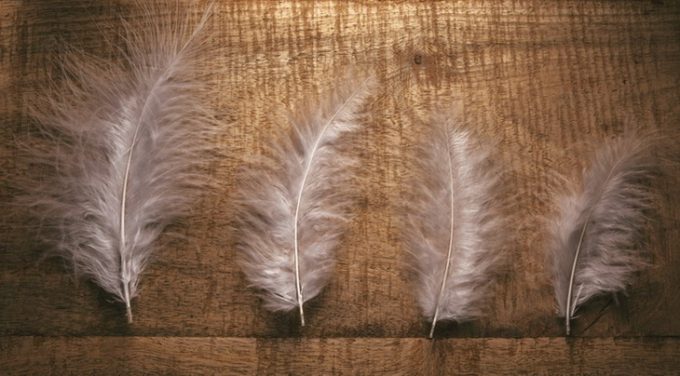
PrimaLoft Gold Insulation Active
For the more active adventurers, this insulation offers a 4-way stretch that will not damage the insulation, as well as offering the traditional benefits of Gold insulation.
PrimaLoft Gold Insulation Luxe
Lux insulation offers everything the Gold insulation offers, but with the luxury of down appearance, feel, and warmth.
PrimaLoft Gold Insulation Eco for Footwear
For cases of repeated compression, this insulation is made extra durable, but also from 90% recycled materials. It also includes high warmth, water-resistance, and lightweight breathability.
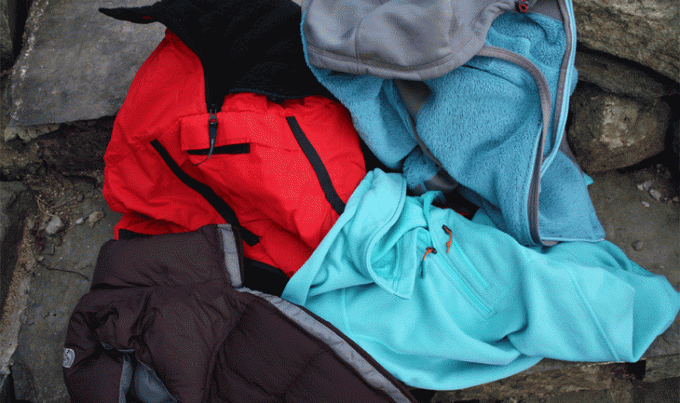
PrimaLoft Gold Insulation Eco with Grip Control
Specifically for gloves, this insulation offers a non-slip grip while being made of 90% recycled material. It is also warm, water-resistant, breathable and lightweight.
PrimaLoft Gold Ceramic Blend
Just like an oven, this insulation includes ceramic particles that push body heat back into you, with all the qualities of Gold insulation included.
PrimaLoft Gold Insulation Merino Wool Blend
Utilizing the performance features of natural Merino wool, this insulation combines Marino with PrimaLoft. Although not as compressible, it does have the other same traits as Gold insulation.

PrimaLoft Gold Insulation USA
Describes as a tactical insulation, this insulation has 25 years of military field-testing backing its name, as well as being 100% made from US products, and assembled in the US. Not being compressible, it still is warm, water-resistant, breathable, lightweight, and soft.
What about down insulation?
First, it’s important to understand what down is. It is a common belief that down is actually feathers, but this is not true. Down is a natural insulator in its own right, being the soft tufts found underneath the feathers of geese and ducks. It is an undercoat and mediator that can be considered one of the natural- world’s best heat-keepers.
The secret to down’s excellent insulating qualities can be attributed to the lofty grouping of down that naturally occurs in order to trap air and heat. What’s meant by “lofty” is the characteristics of thickness and resilience that are kept while still also being fluffy and light, allowing for space between each down particle.
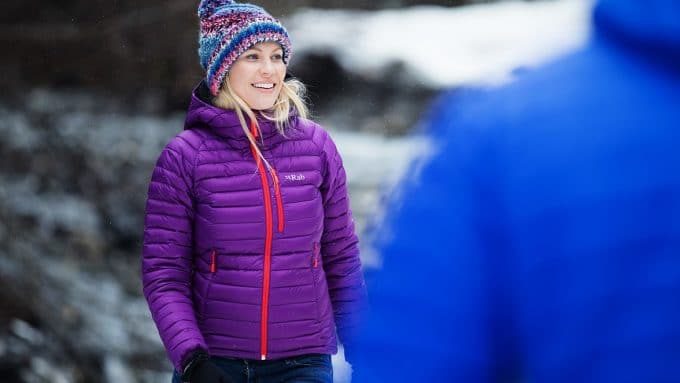
This spacing between down tufts is directly responsible for the trapping of heat, but also its breathability and allowance of sweat and other moisture to wick away from the body and evaporate.A common term used to define down products are their “warmth-to-weight ratio”.
This means that down is able to provide excellent heat and warmth, while not being heavy and burdensome. Also, with the loft of down combined with its lightweight, it is easy to compress and carry, an import space-saving characteristic when you must heft everything you need with you on backpacking trips or while wilderness camping.
Continuing with the desirable traits of down is the absolute comfort down brings. The warmth-to-weight ratio leaves a feeling of cozy containment, like being wrapped in a light, extra-warm blanket that molds to your body. In fact, many high-quality home comforters are made of down!
But, similar to synthetic materials, down does come in grades of quality. The effectiveness of a down product is characterized by its “fill power”. Sounding more complicated that it actually is, fill power defines how many cubic inches a single ounce of down can fill. As stated before, down is lofty, but some down more so than others.

This means some grades of down appear fluffier and higher quantity, but in actuality weigh less per ounce because of the spacing of the down tufts (which is what you want!). As a consumer, you are saved the stress of fondling your potential down purchases to assess density.
Down products are marked with clean numerical grades to inform you of their fill power. Acceptable down products range from a rating of 450 to 900. Obviously, a 900 rating places a down insulator as maintaining the best fill power as well as warmth-to-weight ratio, but it also guarantees a hefty price.
The higher rated a down product is means the down has been sourced from adult geese rather than ducks. Just as synthetic insulators try to be constructed of the finest thread, mature goose down is extremely fine in its make-up. Duck down, on the flip side, is not quite as fine and therefore has less loft—bringing a cheaper price tag.
Moreover, down is more expensive than synthetic insulators for the simple reason that it must be natural sources and collected, a far more difficult task than organized manufacturing from start to finish.Aside from the comfort, light-weight qualities, and compressibility, down is also highly resilient.
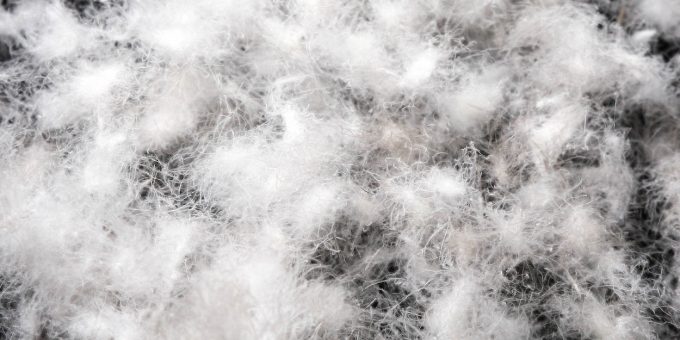
If provided proper care, down can last for years on end. Standing up to being shoved into and removed from packs and storage, down offers the potential for the purchase of a lifetime. But, the qualifier of “proper care” is important. Down must be washed carefully and to labeled instructions.
Also, if your down begins to escape the shell, don’t pull it, rather massage it back into the shell. Furthermore, down does have the potential to clump, but this can be avoided by how a product is sewn into sections.
So, is PrimaLoft a better choice than down?
When it comes to comparing the products, there are several primary factors that may sway your opinion: water-resistance, price, and durability. When you look closely at the traits of both down and PrimaLoft insulation, you may have noticed it appears as though the entire construct of synthetic insulation is meant to mimic the qualities.

But there is one major catch to down that prompted the synthetic industry in the first place: down is not water-resistant.
Down is not waterproof, or even water-resistant
If down does get wet, it completely loses all effectiveness as an insulator until it dries out. And it takes forever to dry. When down is exposed to moisture, whether that be humidity, rain, wet snow, or tracking through wet environments, down becomes soggy and soaked through.
This results in the loss of all loft, clumps your down fill together, and makes it heavy and cold.There are ways to avoid this, including new technology that involves coating down with water-proof materials, casing down in waterproof shells or combining down with synthetic insulation.
Ultimately, though, if you know you will be exposed to lots of wet conditions, down could become a problem, especially when synthetic materials offer so much water resistance. Plus, although down is breathable, if you are a heavy sweater or may face changing conditions.
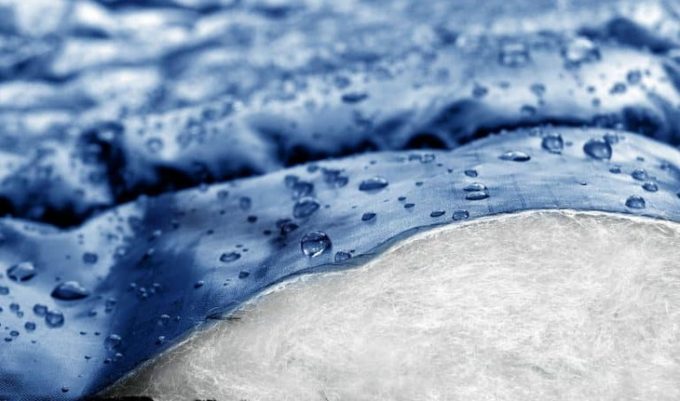
Down will not be as efficient at pushing out moisture, which could lead to a sticky and soggy inner-layer. When it comes to seeking water resistance and breathability, PrimaLoft synthetic insulation is a clear winner.
To spend on down, or not to spend on down is the question
Moving into the price, it has already been stated that down is an expensive choice. But the truth is, down products offer luxury that cannot be matched. PrimaLoft synthetic insulators do their best to beat out down, but there is a reason premium comforters and furniture choose down.
It is a material, when put into a high-quality shell, moves with the body, provides immense warmth with little weight, and is highly practical for avoid outdoorsmen in its durability and pack-ability. Additionally, synthetic materials will simply not stand up to the packing and re-packing that down will.
Over time, a compression of PrimaLoft synthetic materials will damage the fibers, leading to clumping and uneven spacing of tufts, bringing the potential for cold spots. That’s not to say down is perfect. Down does have spill-potential, with holes not being as easy to address through damage-control.
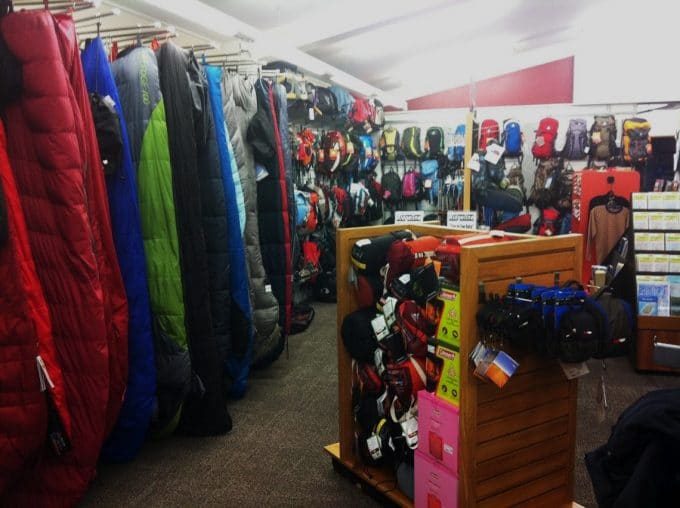
The feathers will spill out if it is not patched ASAP. Also, down comes in grades where there could be feathers mixed in. Down must be sorted for feather removal, and cheaper down products could include percentages of feathers in the down. Do check on our comparison of goretex and hyvent to give you more insight on insulation.
If you aren’t ready to spend on a product that promises either just down, or a high percent of down, those feathers could poke through your fabric and lead to leaking of insulation. Just like the advice given to stick with high-quality PrimaLoft synthetic material, if you opt for down, don’t settle for a cheap product, be ready to invest in down quality!
What about both?
There are options for a combination of PrimaLoft synthetic insulation with down insulation. PrimaLoft even offers its own mix of the two, as mentioned in the list of available PrimaLoft products. This could include a product completely filled with a ratio mixture of PrimaLoft and down, a product where portions are synthetically are down.
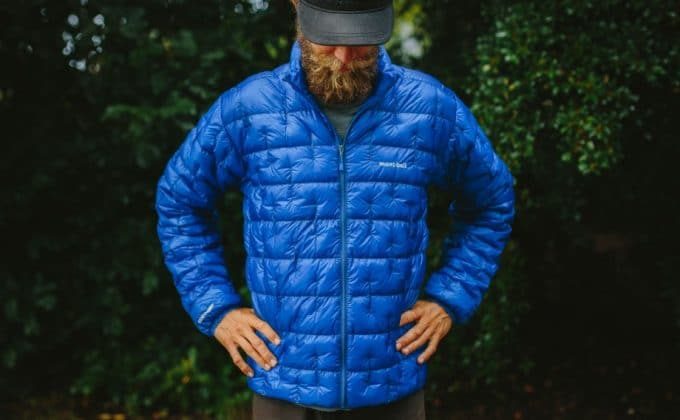
An example could be a coat that has PrimaLoft synthetic material over the top of the arms and across the shoulders where moisture is likely to come in contact, but down insulation around the front and back to keep a warm core.This combination of synthetic PrimaLoft insulation and down can be great for the potential of unknown conditions.
For a buyer that desires the luxury of down with the practicality of synthetic insulation. But, this combination is indeed a compromise. It means more weight due to the inclusion of synthetic materials, less water resistance due to the inclusion of down, and it is more expensive than if you chose just synthetic.
When it comes down to it
So when it comes down to it (pun intended), PrimaLoft synthetic materials win on water-resistance and breathability, down wins on comfort and durability, and all that’s left is the price. From all that’s known about each product, choose what you need.
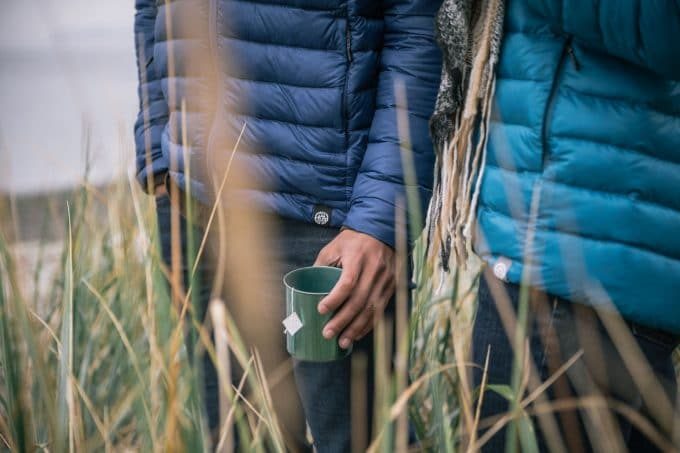
If you are going to be embarking into wet or moist environments, choose synthetic. If that is not as much of a problem, it is better to spend on a down product, because as stated before, PrimaLoft synthetics are aiming to copy the real-deal down.
If you are preparing to drop a pretty penny on good cold-weather gear, opt for high quality down. It will last, as well as be comfortable and warm. Synthetic is fine too, though because modern technology made PrimaLoft a truly premium product. If you don’t like the idea of being forced to choose, it’s also okay to choose a hybrid of PrimaLoft.
For more choices and options, see our review of the top down sleeping bags for your reference.

